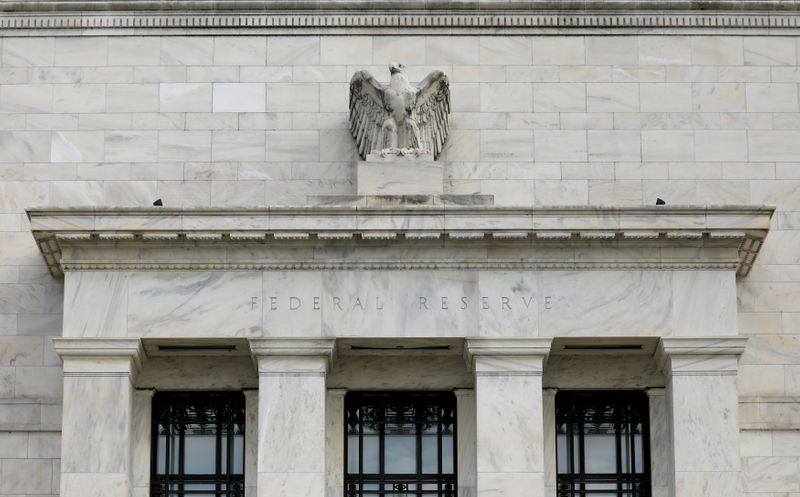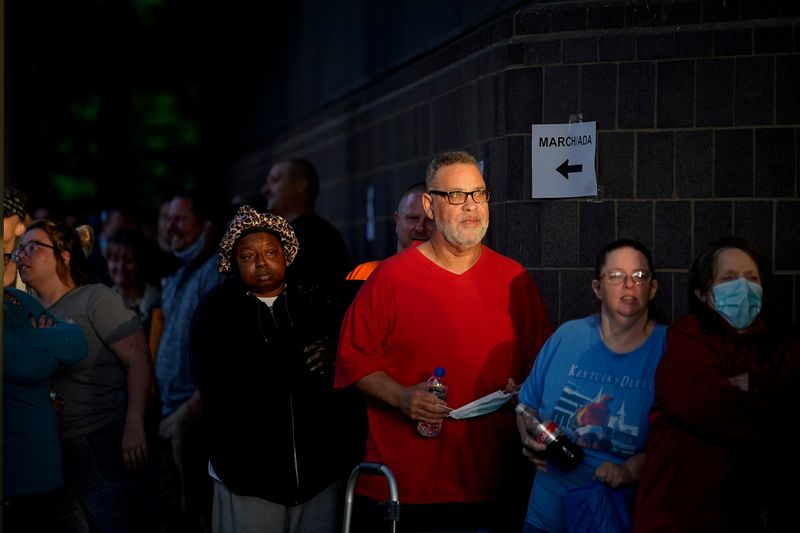By Howard Schneider and Ann Saphir
WASHINGTON (Reuters) - Facing a still-scarred economy that may need an extended time to recover fully, Federal Reserve officials last month debated how to lay the groundwork for the public to accept higher inflation, and also the need to "stay vigilant" for signs of stress in buoyant asset markets, according to minutes of the U.S. central bank's Jan. 26-27 policy meeting.
In discussions that ranged from the public's perceptions of inflation to the vagaries of Robinhood-type retail stock trading platforms, Fed officials said they were still prepared to keep their easy monetary policy on track to help heal a job market still ailing from the impact of the coronavirus pandemic.
With a jump in some prices expected this spring, "many participants stressed the importance of distinguishing between such one-time changes in relative prices and changes in the underlying trend for inflation," according to the minutes, which were released on Wednesday.
"A number of participants" said they saw such price increases on the horizon for goods "whose production has been subject to supply chain constraints, or soon could be; others anticipated that a possibly abrupt return to normal levels of activity could result in one-time increases in certain prices," the minutes stated as Fed officials wrestled with how to prepare for a post-pandemic reopening of the economy.
The United States remains under siege from the health crisis, but with new vaccines being distributed and inoculations running at more than 1.5 million each day, the economy is expected to run hotter this year.
Major food producers said this week that they were mulling possible price hikes, and data on Wednesday showed the producer price index for final demand jumped last month by the most in more than a decade.
Fed officials, determined to restore the job market and push inflation to 2% on a persistent basis, plan to ignore all that.
In the drive to explain why to a public typically sensitive to the prices of basic goods like food and energy, Fed officials emphasized the need to focus on the differences between "temporary factors affecting inflation" and more systemic changes in prices that the central bank tries to target, the minutes showed.
In a debate over the pandemic's endgame, others were concerned about the potential for stress to bubble up in the financial system.
"A few participants stated that it would be important to stay vigilant to ensure that the banking system remained strong and resilient," with "some participants" noting the boom in initial public offerings of stock, and rising asset values "that might have been affected by retail investors trading through electronic platforms."
GAME STILL ON
Though it was not mentioned by name in the Fed minutes, the dramatic rise and crash of video game retailer GameStop (NYSE:GME) and other so-called "meme" stocks was on the minds of policymakers. It is the topic of a congressional hearing this week, and also raised concerns the Fed's loose money policy, used to nurse the economy through the pandemic, may fuel a damaging asset bubble.
Similarly, the massive federal stimulus provided to the economy last year and expected to soar even further in the coming months has been critical to keeping families afloat, but also represents "upside risks" if consumers spend more freely than expected in a reopened economy, the minutes noted.
After a grim winter that saw coronavirus infections surge but also witnessed the rollout of new vaccines, some analysts argued the Fed may find itself playing catch-up if things improve faster than anticipated.
"In just one more month another 50 million people will likely receive the initial shot," of the two-dose COVID-19 vaccines currently approved, said Bob Miller, head of BlackRock (NYSE:BLK)'s Americas Fundamental Fixed Income. "Further, we’re about to get another round of fiscal policy stimulus ... This confluence of factors could force the Fed’s hand."
For now, however, the premium is on keeping support for the economy in place.
"Participants observed that the economy was far from achieving the Committee’s broad-based and inclusive goal of maximum employment and that even with a brisk pace of improvement in the labor market, achieving this goal would take some time," the minutes said.
The Fed made few changes to its policy statement at its meeting in January. It is scheduled to release its next policy statement and new economic projections on March 17.
The U.S. central bank has pledged to keep its key overnight interest rate near zero until inflation is "on track to moderately exceed" its 2% target and the job market is approaching "maximum employment" - a promise likely to keep rates low for years to come.
In addition, the Fed has promised to continue purchasing $120 billion of government bonds per month until there has been "substantial further progress" towards its inflation and employment goals.
Given the economy's halting progress in recent months, that may mean Fed policy stays largely on hold for an extended period, and officials in recent public statements have emphasized they are in no rush to shift away from crisis-fighting mode.

"We're going to be patient," Fed Chair Jerome Powell said at a news conference after the end of last month's policy meeting. "We'll seek inflation moderately above 2% for some time ... The way to achieve credibility on that is to actually do it. And so that’s what we’re planning on doing."
